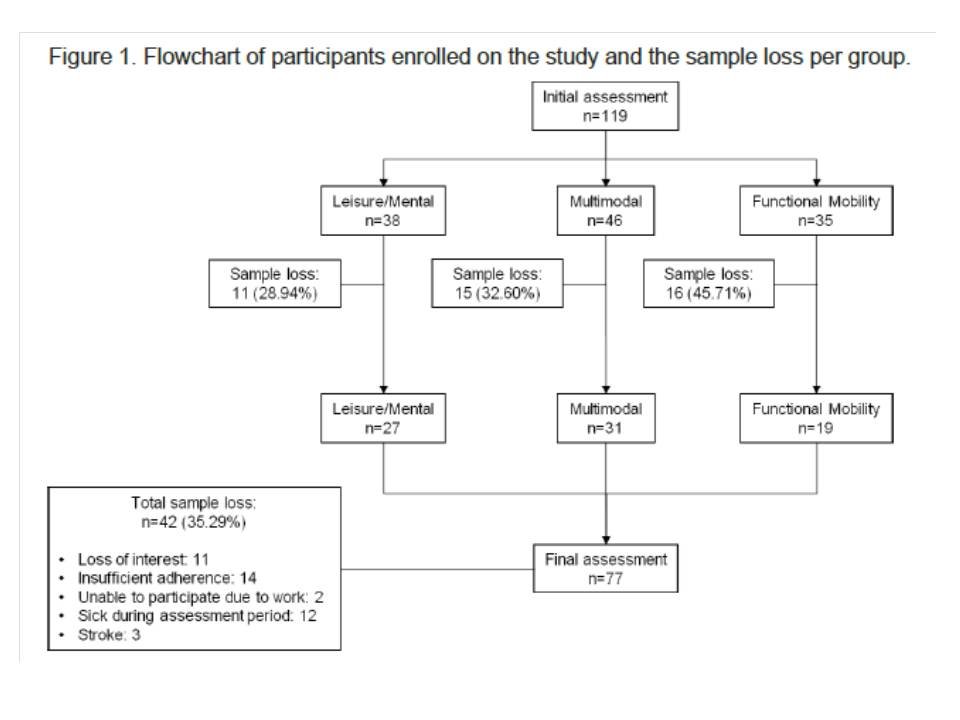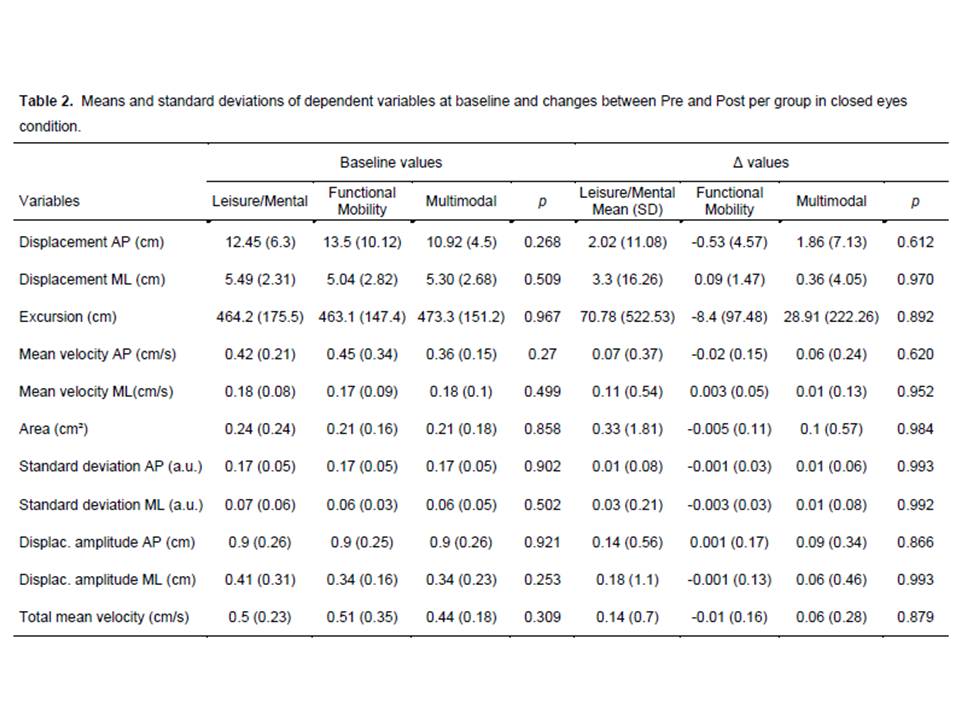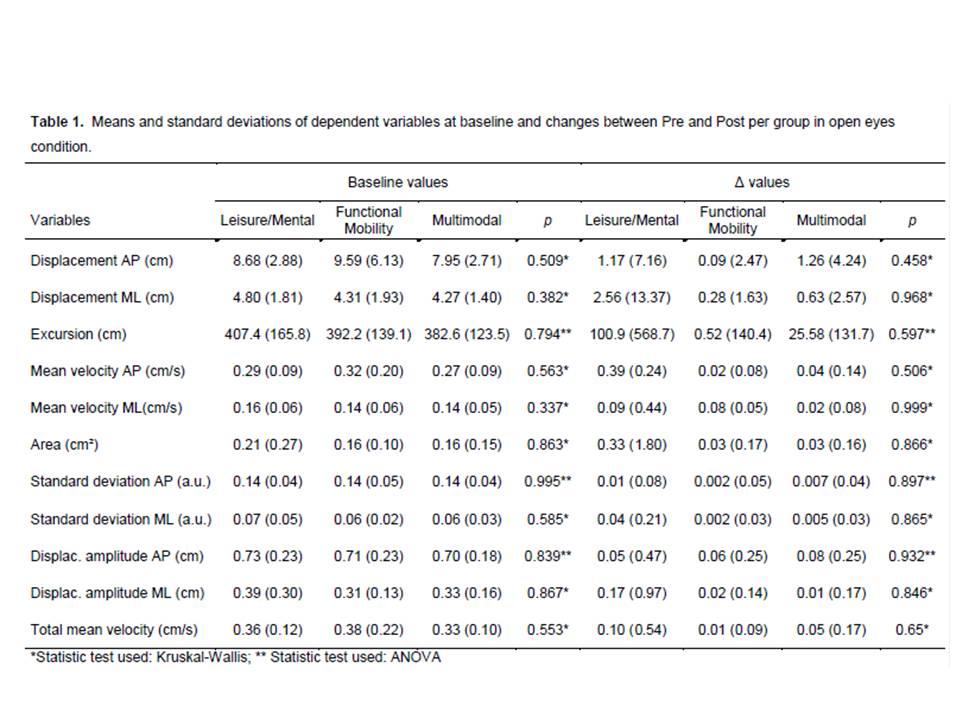Session Information
Date: Thursday, June 8, 2017
Session Title: Clinical Trials and Therapy in Movement Disorders
Session Time: 1:15pm-2:45pm
Location: Exhibit Hall C
Objective: Our aim was to investigate the effects of different long-lasting exercises programs on the postural control in people with Parkinson’s disease (PD).
Background: Postural instability is a major symptom in PD and it is dopamine-resistant. Therefore, physical exercise has been successfully used to improve balance (although the best sort of exercise to be used is unclear). Short-term focused interventions might be effective on postural instability in PD, since dynamic balance and functional mobility parameters showed to be improved after these interventions1-2.
Methods: A total of 119 people with PD were pseudo-randomly assigned into groups according to exercise programs. At the end of the exercise period, 77 participants completed all the procedures and were included in the final analyses [figure 1]. Three different programs were tested: Leisure/Mental (focused on leisure and mental activities with very low volume of exercises), Functional Mobility (focused on the improvement/maintenance of balance and mobility) and Multimodal (focused on functional capacity components). The exercise programs lasted 32 weeks (eight months) and were executed 2 times/week; all sessions lasted 60 minutes. Static posture control was assessed before and after the 8-month period through posturography (standing on force plate with and without vision). During all sessions, participants were on the “on” phase of PD medication.
Results: Groups were not significantly different for any variables in baseline (Pre). There was no significant difference among groups in any variables after the exercise programs. This means that all groups behaved similarly after the 8-months of exercise program. The means and standard deviations for all postural control variables on baseline and the means and standard deviation of the ∆ are shown for open eyes task [table 1] and for closed eyes task [table 2].
Conclusions: These results demonstrated that different modalities of exercises (even those focused on leisure/mental activities) were successful to maintain static and dynamic balance in people with PD even with the disease progression during 8-months.
References: 1Allen NE, Sherrington C, Paul SS, Canning CG. (2011) Mov Disord; 26:1605-15.
2Shen X, Wong-Yu IS, Mak MK. (2016) Neurorehabil Neural Repair; 30:512-27.
To cite this abstract in AMA style:
L. Gobbi, N. Rinaldi, P. Pelicioni, E. Lirani-Silva, L. Moraes, M. Pereira. Postural control is maintained after a 8-months period of exercise in people with Parkinson’s disease [abstract]. Mov Disord. 2017; 32 (suppl 2). https://www.mdsabstracts.org/abstract/postural-control-is-maintained-after-a-8-months-period-of-exercise-in-people-with-parkinsons-disease/. Accessed January 1, 2026.« Back to 2017 International Congress
MDS Abstracts - https://www.mdsabstracts.org/abstract/postural-control-is-maintained-after-a-8-months-period-of-exercise-in-people-with-parkinsons-disease/



